Baegunsan Mountain Donggokgyegok Valley (백운산 동곡계곡)
0m 55713 2021-04-23
154, Yaksujedan-gil, Okryong-myeon, Gwangyang-si, Jeollanam-do
+82-61-797-3333
Donggokgyegok Valley is one of four large valleys on Baegunsan Mountain. The valley opens up towards Gwangyang, with the waters of Dongcheon Stream flowing into Gwangyangman Bay. Donggokgyegok Valley is wide, making it convenient for transportation, and perfect for a family getaway during the holidays. Located along Hanjae Pass between the mountain summit and Ttoaribong Peak on the west side, the valley is also sometimes called Dapgoksimni. The valley stretches a distance of 10 kilometers and is especially beautiful in fall when surrounded by vibrant autumn foliage. Donggokgyegok Valley is a protected nature reserve with over 900 various species of vegetation.
Baegunsan Recreational Forest (백운산자연휴양림)
3.1 Km 18125 2024-02-01
337 Baekgye-ro, Gwangyang-si, Jeollanam-do
+82-61-797-2655
Located in Baegunsan Mountain is a recreational forest that is a testament to Korea's rich ecosystem. Home to many rare fauna and flora, the area brims with diverse attractions. Come springtime, visitors can find the maple sap, a mineral-rich liquid from a local deciduous tree of the maple family, known for its medicinal benefits. Indeed, this is a recreational forest cradled in the arms of nature. With the towering Baegunsan peak, scaling 1,222 meters, as its crown jewel, the landscape unfolds like a tapestry woven with harmonious blends of man-made and natural pine forests. Journey through the cedar and cypress woods, and one will find the valley that evokes sheer wonder. Close by, history whispers through the ancient Ongnyongsa Temple Site, where Doseonguksa dedicated 35 years to ascetic practices. As February turns to March, over 7,000 camellias blossom around this sacred site, painting the area in vibrant hues.
Baegunsan Eochigyegok Valley (백운산 어치계곡)
5.5 Km 21081 2021-06-01
531, Baekhak-ro, Gwangyang-si, Jeollanam-do
+82-61-797-3333
Eochigyegok Valley, located in Eochi-ri, Jinsang-myeon, is 7 kilometers long, and is a valley with clear water flowing through the lush forest with rocks in all sizes that provide a resting spot. In particular, it is home to Orodae Rock, cool enough to form dew even in the middle of the day and Gusipokpo Falls with a legend of a flying horse.
The valley is located ten minutes away from the Seomjingang River Maehwa Village, and plum trees cover the valley in spring with plum blossoms. In autumn, the countless oak trees in the forest become an acorn factory for its habitats. Baegunsan Eochigyegok Valley is worth visiting at any time of the year and provides various agricultural products to local residents. Orodae Rock, located in the uppermost stream, refers to a rock that looks like a large courtyard. An inscription remains, saying that it is named Orodae because it is cool enough to form dew even in the midday of the summer. Legend says that Gusiso Pool at the base of Gusipokpo Falls is so wide that it will not dry up even in a draught.
Peepul Hanokstay [Korea Quality] / 연경당 [한국관광 품질인증]
6.9 Km 8910 2020-12-12
13-40, Jungheung-ro, Bonggang-myeon, Gwangyang-si, Jeollanam-do
+82-10-4665-9301
Opened in 2008, Yeongyeongdang, meaning ‘a house with fine sunshine’, is a hanok stay facility located about 6km from Gwangyang-eup in Jeollanam-do. It is set amid the beautiful scenery of Baegun Reservoir, Baegunsan Mountain, and Bibongsan Mountain, of which the family room commands a particularly good view. Yeongyeongdang has 5 guestrooms in total, each of which is equipped with an individual bathroom with bathtub and a toilet. The heating system consists of traditional Korean floor heating (gudeul), a boiler, an air-conditioner, and glass doors and windows to keep out cold draughts. Cooking is not permitted inside the rooms, but guests can use the large communal cooking room, which also provides snacks and has a beverage vending machine. Guests can also enjoy a BBQ or a meal in the courtyard where a wooden table is placed for that purpose. As there are no shops around the house, guests should bring food and other necessities with them. The rooms will be heated in advance if guests inform the owner of their expected arrival time.
Gwangyang Maehwa Village (광양 매화마을)
8.0 Km 34321 2023-10-26
1563-1 Seomjingangmaehwa-ro, Gwangyang-si, Jeollanam-do
+82-61-772-9494
Following the Seomjingang River flowing down the outskirts of Jirisan Mountain is a village filled with plum trees. This village, Seomjin Village, is also known as the Maehwa (plum) Village for its abundant number of plum trees. Instead of crops and grains, plum trees are cultivated on farmlands, boasting white snow-like blossoms in March and bearing ripe plums in June. The annual Plum Blossom Festival takes place in the village every March when the plum blossoms are in full bloom.
Gwangyang Maehwa Festival (광양 매화축제)
8.1 Km 57826 2024-02-26
55 Jimak 1-gil, Gwangyang-si, Jeollanam-do
+82-61-797-2721
Gwangyang Maehwa Festival takes place next to the Seomjingang River in Gwangyang Maehwa Village, home of the largest number of plum blossom trees in Korea. During the festival period, visitors can enjoy a walk beneath the plum blossoms, and also sample and purchase local organic plum products.
Gwangyang Cheong Maesil Farm (광양 청매실농원)
8.1 Km 6230 2021-02-01
55, Jimak 1-gil, Gwangyang-si, Jeollanam-do
+82-61-772-4066
Located at the foot of Baegunsan Mountain with water of Seomjingang River flowing nearby, Gwangyang Cheong Maesil Farm offers the perfect setting for visitors to enjoy the scenery and locally produced maesil (plum). With various maesil related food products including side dishes as well as jam, jelly and traditional foods, visitors can buy freshly made products on-site or order online or by phone.
Cheong Maesil Farm (홍쌍리 청매실농원)
8.1 Km 71041 2024-02-01
55 Jimak 1-gil, Daap-myeon, Gwangyang-si, Jeollanam-do
Cheong Maesil Farm sprawls across an expansive area of over 165,000 m2 at the foothills of Baegunsan Mountain, which rises to an elevation of 1,217 meters. The farm has been lovingly tended to by the renowned Plum Blossom Doctor, Hong Ssang-ri, for decades, drawing visitors from all over the country. In March, Cheong Maesil Farm transforms into a breathtaking canvas of colors—with blue and red plums, the delicate lily trees and the vibrant cornelian cherries all blossoming in unison. For photo enthusiasts, the farm boasts a dedicated photo zone, while the Pavilion Observatory offers panoramic views that are a favorite among visitors. From this spot, one can marvel at the picturesque scenery of Gwangyang Maehwa Village, Seomjingang River, and Hadong Village on the river’s other side. Visitors in spring are recommended to attend the annual plum festival centered around Cheong Maesil Farm. Moreover, the nearby Gwangyang Plum Culture Center makes for an enriching stopover.
Pyeongsari Park (평사리공원)
9.5 Km 10485 2022-08-22
3145-1, Seomjingang-daero, Hadong-gun, Gyeongsangnam-do
+82-55-883-9004
Situated along Seomjingang River between Gurye and Hadong, Pyeongsari Park was built for the enjoyment of summer tourists to the area. In addition to the beautiful river, the park is home to campgrounds, numerous shaded rest spots, basketball courts, soccer fields, and an abundance of parking space. Decorated with Jangseung (totem poles, which used to be set at the entrance of villages), the spacious park is full of excellent amenities: barbecue grills, benches, drinking fountains, and clean bathrooms. The sandy banks of the river offer a unique opportunity to catch marsh clams.
Pyeongsari Park and its nearby attractions appeared in Toji (The Land), the epic historical novel by Park Kyung-ni. Visitors may want to tour the group of houses that have been reproduced to commemorate the novel, including the famous Choi Champan House.
Nearby attractions include Hwagae Market, Ssanggyesa Temple, and Seomjingang Maehwa Village, host of the Gwangyang Maehwa Festival.
[Hadong Pak Kyongni Toji-gil Trail 1] Seomjingang Pyeongsa-ri Park to Hwagae Market ([하동 박경리 토지길 1코스] 섬진강 평사리공원~화개장터)
9.5 Km 30159 2024-02-08
Agyang-myeon, Hadong-gun, Gyeongsangnam-do
Hadong Pak Kyongni Toji-gil Trail 1 offers a scenic route around the Pyeongsa-ri fields, famously depicted in the novel Toji (The Land) by prominent Korean novelist Pak Kyongni. Spanning 18 kilometers from Pyeongsa-ri to Hwagae Market, this trail allows visitors to stroll alongside the Seomjingang River, immersing themselves in the world of the novel. Additionally, it is celebrated as a magnificent spot for cherry blossom viewing in spring.
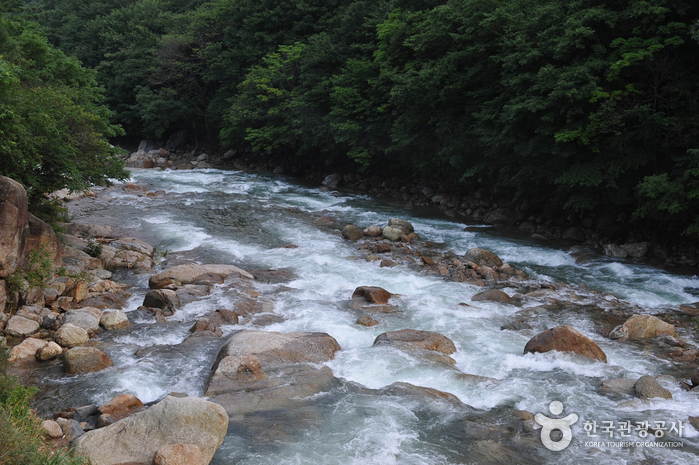
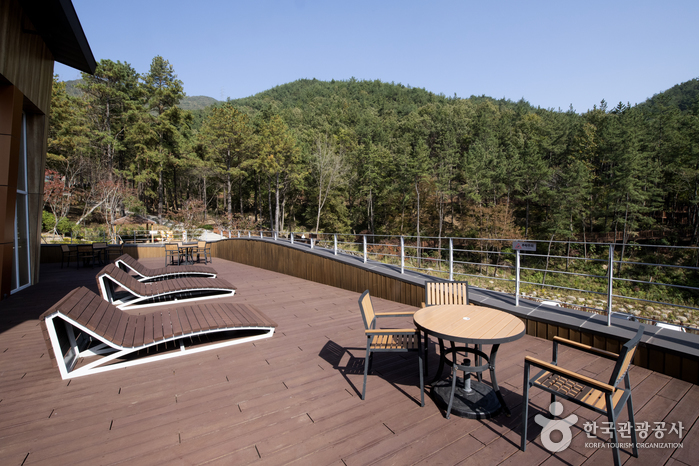
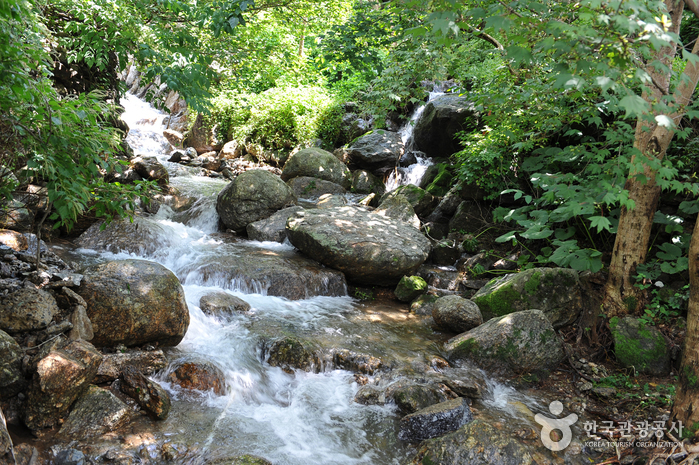
![Peepul Hanokstay [Korea Quality] / 연경당 [한국관광 품질인증]](http://tong.visitkorea.or.kr/cms/resource/40/1880740_image2_1.jpg)

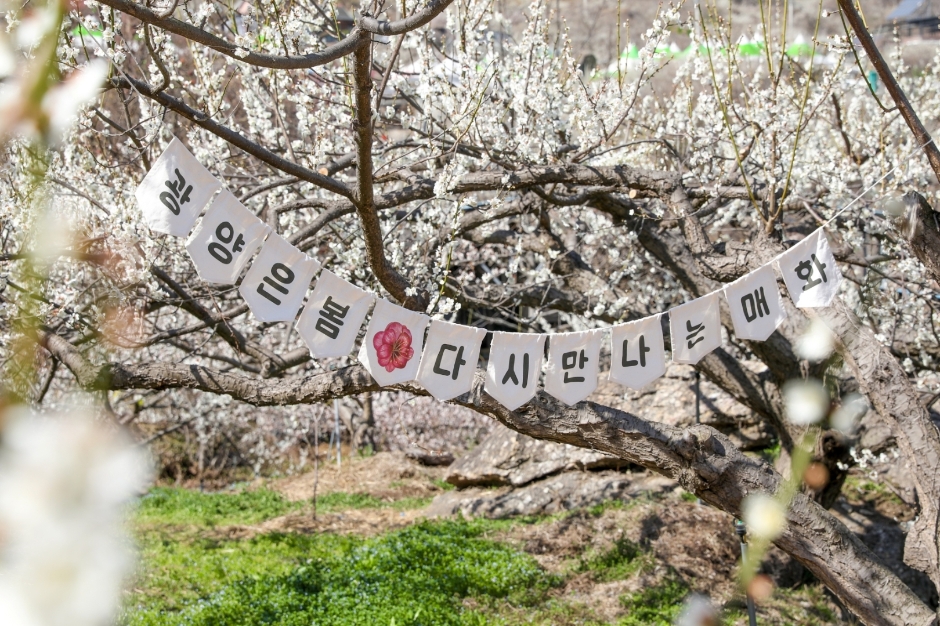
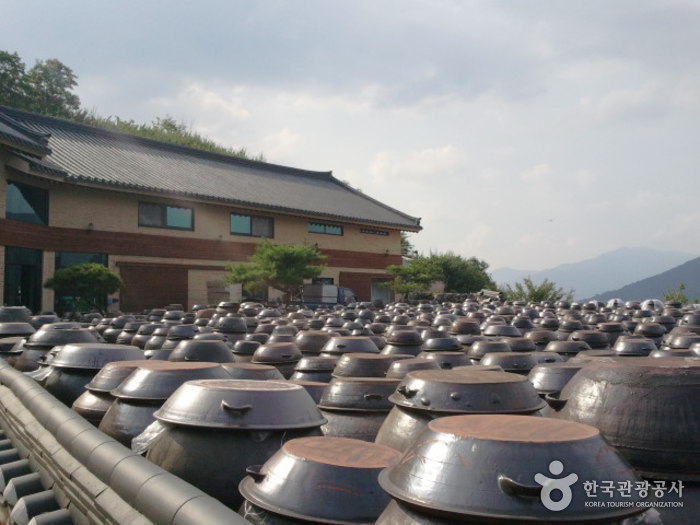
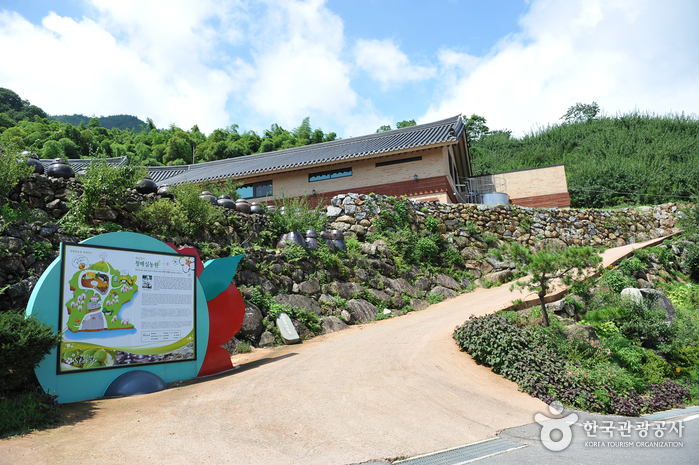
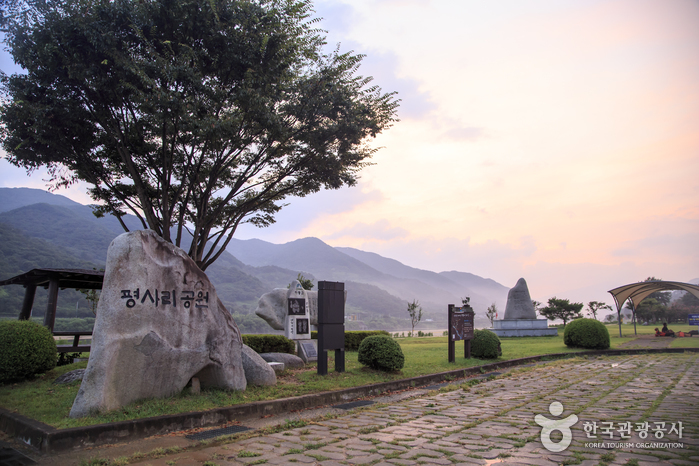
 English
English
 한국어
한국어 日本語
日本語 中文(简体)
中文(简体) Deutsch
Deutsch Français
Français Español
Español Русский
Русский